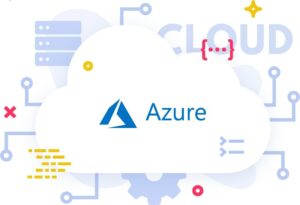Top 10 .NET Trends to Dominate in 2023
It’s a well-known fact that .NET is the best solution for creating enterprise-scale applications. .NET Developers are in high demand, and this trend will continue to rise in popularity. Choosing .NET is one of the top 10 trends in 2023. Let’s explore this list deeper. Becoming a leader in the software development industry is about adapting and following the latest trends in an effort for those in the .NET development community to satisfy their career needs completely. We’ve compiled a list of the top 10 .NET development trends to dominate in 2023.
Table of Contents
.NET is a robust, cross-platform, and open source development platform that provides .NET Framework for building Windows client and server applications. .NET was first released in 2001 by Microsoft, who acquired it from the use of technologies originating from its purchase of True Software Scandinavia in 1999. By 2012, the open source .NET Core framework was developed, which runs cross-platform on Windows, macOS, and Linux operating systems. The latest version ASP.NET 5 (or ASP.NET v5), includes an HTML/JavaScript web development framework known as “SignalR” along with a new set of features such as intuitive scaffolding, MVC 6 Razor, Web API 2, OWIN middleware integration etc.
Azure Cloud Development among .NET trends
The Microsoft Azure cloud platform has been a game changer since its inception. Although Azure is primarily used for developing and deploying web applications, it can also be used to create desktop applications.
Azure Cloud Development is one of the hottest trends in the .NET development space. It is ideal for companies that want to build their applications using the latest cloud technologies.

Azure has emerged as one of the most popular cloud platforms. It provides infrastructure services such as virtual machines (VM), storage, load balancing, monitoring. Also, more at a fraction of what it would cost if you were to purchase these resources on-premise. Azure also provides business analytics tools such as Machine Learning Studio that enable customers to build models and deploy them into production with minimal investment.
Introduction To .Net 6 Framework and .NET Trends
.NET Core is a cross-platform and open-source framework for creating modern applications for the web. The .NET Core framework has been designed to support Windows and Linux-based operating systems. The .NET Core framework was released in 2016 by Microsoft as a replacement for the previous version of the .NET Framework. The new version is smaller, faster, and more flexible than its predecessor.
The .NET Framework is a software development platform created by Microsoft which allows programmers to build applications using many different programming languages. It was first introduced in 2002 as an evolution of Microsoft’s earlier programming languages, such as Visual Basic (VB) and C#. It provides a large library of classes that can be used in any application written with the framework. The latest version of this framework is called “.Net 6” or “ASP.Net 6”.
More Serverless Computing Using .NET Core
When it comes to cloud computing, it’s easy to think of serverless as the next step in the evolution of the cloud. But for many developers, this means leaping into the unknown. What makes serverless so attractive? And what are the challenges? This article provides a quick introduction and then dives deeper into some of the key benefits and challenges of adopting serverless computing with .NET Core.
Serverless computing is an evolution of cloud computing that enables you to build and run applications and services without having to provision or manage any servers. It does this by allowing developers to write code that runs on ephemeral containers (containers that live for only a short period) that are managed by a provider such as AWS Lambda or Azure Functions.
Xamarin.Forms
Xamarin.Forms is a cross-platform UI framework that enables developers to build native apps using C# and XAML. The framework allows developers to share code across mobile platforms, meaning they have to write less code and focus on business logic instead of the user interface.
Xamarin recently open-sourced Xamarin. Forms are now available as an MIT license, making it easier for developers to download and use the toolkit in their projects.
The company also announced that it would be moving away from Xamarin Forms to its cross-platform UI framework, NativeScript Canvas, based on Web standards like HTML5 and CSS3.
Security With .NET Framework and Trends
With the introduction of .NET Core 3, Microsoft has taken a big step towards making the .NET framework more secure. Developers can now use managed code for all their applications and services without worrying about security issues. It also provides a platform for developers to write managed code in whatever language they want as long as it supports .NET Core 3 SDK.
The most significant advantage of this technology is that it provides seamless integration between your application and existing web servers like Apache or NGINX. This means you don’t have to rewrite your existing codebase because it runs on a different server than before.
With this technology, you can easily convert any legacy application into a modern one without hassle. You must install the required dependencies on your machine and start building your application from scratch.
Asp.Net Core Docker Support
Microsoft announced Docker support in mid-2019, which is currently available in preview mode. It allows developers to create Docker images to run on any platform without installing additional software or packages.
Docker Image Builder (DIAB) is an open-source tool that simplifies the creation of Docker images by using standard templates with minimal configuration required from users.
.NET is a general-purpose platform for developers to build web and mobile applications. It has built-in support for multiple programming languages, which makes it easy to write code in any language you want. .NET Core is the latest version of the .NET framework that provides a complete set of libraries for modern web development.
Docker is one of the most popular tools developers, and DevOps professionals use worldwide to build software in containers. Docker allows you to create lightweight virtualized operating system environments called containers where multiple applications can run at once without affecting each other. Containers are isolated from each other and run on top of an operating system (OS). Each container has its filesystem and runs within a single process on your computer or server.
Motion UI
Motion UI is a design trend that can be applied to any design project. It has become increasingly popular thanks to the growing use of motion graphics in digital media and on the web. The idea behind Motion UI is simple: use animated elements to create more engaging user experiences.
Motion UI can add a personal touch to your website or app, making your brand more memorable and appealing. It’s also great to showcase your product or service and get potential customers excited about your offer.

Motion UI has many applications, from simple animations on buttons and images to full-blown video backgrounds or interactive menus.
Blazor Server-Side Apps for Net Trends
The web is changing. It’s no longer enough to build a website and call it done. The web is becoming more powerful, and developers are creating new experiences beyond the browser.
Blazor was after .NET Core to bring server-side rendering (SSR) back to the web. It allows you to run C# on both the client and server side, using WebAssembly as its runtime. This enables you to build truly client-side applications with all the benefits of server-side rendering.
Blazor is an experimental web framework that runs C# code in the browser with WebAssembly. It’s designed to provide a better development experience for single-page applications (SPAs) than JavaScript frameworks.
By using WebAssembly, Blazor can run without a JavaScript engine in the browser. This means it runs fast, even on low-powered devices such as phones or tablets.
The advantage of Blazor over other server-side frameworks like Node.js is that it’s over the .NET Standard 2.0 and runs on Mono. Hence, this means you can use your existing .NET libraries in your Blazor app.
ML.NET 1.4 Framework
The .NET team is working on several improvements to the framework that will have an impact on all developers, including:
ML.NET 1.4 Framework is a cross-platform machine learning framework for .NET developers who want to use deep learning and artificial intelligence in their applications. ML.NET includes APIs for creating neural networks, training them with data, and making predictions. The main objective of ML.NET is to make it easy for developers to build intelligent apps using their existing code base and skillset. This is while providing them with a rich ecosystem of tools and libraries that they can use to make innovative solutions to real-world problems.
With ML.NET 1.4 Framework, you can use TensorFlow Lite models in your application as well as neural networks created with other frameworks (including Keras) by converting them into ONNX format models, which are compatible with ML.NET runtime support for ONNX models on Windows 10 devices (x86_64).
SignalR
SignalR is a library for ASP.NET developers who want to add real-time web functionality to their applications. So, SignalR makes it very simple to add persistent connections with Server-Sent Events (SSE), WebSockets, and HTTP long-polling (a technique that uses XHR polling). It also supports Azure SignalR, enabling developers to create scalable web applications, mobile backends, and more.
SignalR allows you to create live connections between clients and servers using WebSockets or Server-Sent Events (SSE). This means that you can send data from your server to the client instantly as soon as it changes. The same goes for receiving data from the client – SignalR can push updates to all clients simultaneously in real time!
SignalR is an open-source project on GitHub. Microsoft first developed it but later moved into the community when Microsoft decided to open-source its projects under the MIT license.
The top .NET trends 2022 have included cloud computing, mobile app development, robotics and artificial intelligence (AI), the Internet of Things (IoT), and data science. As these technologies evolve, new trends will emerge that we can’t even imagine now.
Takeaway on .Net Trends 2022:
Information technology (IT) is evolving at a staggering pace. And .NET trends 2022 developers need to keep pace with it well into the future. For those who are beginners in .NET development, the journey can be difficult. However, with continuous practice, you can learn and bring your learning to the next level. Dedication and commitment to learning the trends will set you apart from others.
Technology is not a place where you start but continue or end your career. You need to be up to date with the latest trends in the market. And they should make a remarkable journey in the technological arena by understanding its importance. This article gives you an insight into some of the most prominent prognostications of Future ASP.NET technologies. So that you can make informed decisions while building your career in this field.

AJ Lloren is a loving mother of three. She is passionate about writing, traveling, public speaking, and digital marketing. She is a self-proclaimed funny woman and a daydreamer who dreams of publishing a book one day. She is currently working as a freelance Outreach Specialist and SEO writer for a top SaaS company.










